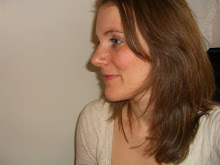If I want to get bigger biceps should I do squats? Will jumping rope help me to be able to touch my toes without bending my knees. Common sense says no. But some people's approach to fitness can be just as confusing if they don't understand the principle of specificity and if they don't recognize the different components of fitness.
The principle of specificity states that each type of exercise yields its own certain and specific fitness benefits. Just as exercises for a specific body part only yield results for that body part, a physical activity that promotes benefits in one component of fitness does not necessarily promote benefits for another component.
So what are the different fitness components? There are two types of fitness components: health-related and skill-related. Health-related fitness components help you improve over-all health, while skill-related fitness components help you perform well in sports and recreational activities that require certain skills. Below are definitions of each fitness component.
HEALTH-RELATED FITNESS COMPONENTS
1. Cardio-Respiratory Endurance is the ability to exercise the entire body for long periods of time without stopping. It requires a strong heart and healthy lungs.
2. Muscular Strength is the amount of force your muscles can produce and is often measured by how much weight you can lift.
3. Muscular Endurance is the ability to use your muscles many times without tiring.
4. Flexibility is the ability to move your joints through a full range of motion and is often thought of as how far you can stretch.
5. Body Composition is the percentage of your body weight from fat compared to the percentage from other body tissues such as muscles and bones.
SKILL-RELATED FITNESS COMPONENTS
1. Agility is the ability to change your body position quickly in a controlled manor.
2. Balance refers to the ability to keep an upright posture while standing still or moving.
3. Coordination is the ability to use two or more body parts together and also the ability to use your body senses together with your body parts.
4. Power is the ability to use strength quickly. It requires both strength and speed.
5. Reaction Time is the amount of time it takes to move once you recognize the need to.
6. Speed is the ability to perform a movement or cover a distance in a short period of time.
As fitness instructors we have a good grasp on the different fitness components and which exercises work which muscle groups. Our class participants may not, so as you are taking your classes through routines be sure to point out which muscles you are focusing on. They'll probably know because they will be feeling it, but it's always good to reinforce what they are doing. It's also a great way to check that the participants are doing the exercise the proper way. Also, point out which fitness component is being focused on. Again, our clients may know that they want to improve their flexibility or agility but they may not know exactly how. When you point out which exercises will help them reach their specific fitness goals it will empower and motivate them.
